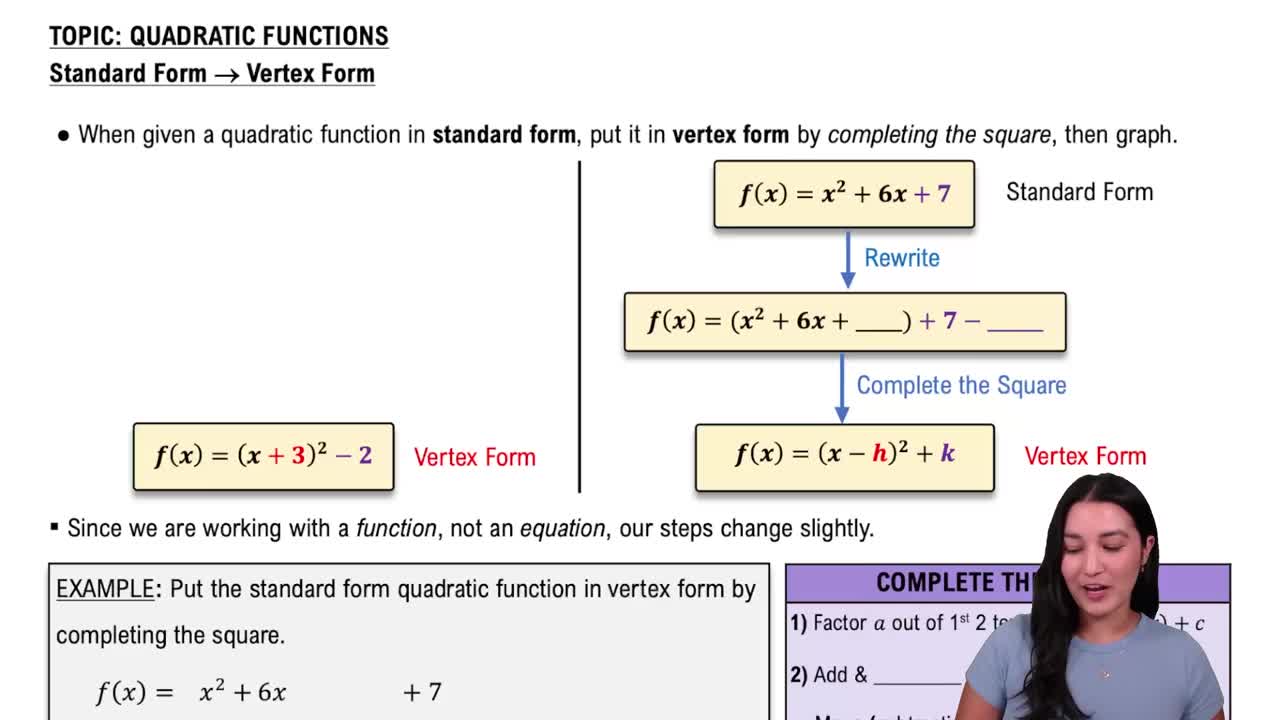Here are the essential concepts you must grasp in order to answer the question correctly.
Quadratic Equations
A quadratic equation is a polynomial equation of degree two, typically in the form ax^2 + bx + c = 0, where a, b, and c are constants. In the given equation, y^2 - 4y - 4x = 0, the variable y is squared, indicating it is a quadratic in y. Understanding the structure of quadratic equations is essential for identifying their properties and solutions.
Recommended video:
Introduction to Quadratic Equations
Standard Form of a Quadratic
The standard form of a quadratic equation is expressed as y = ax^2 + bx + c. This form allows for easy identification of the coefficients and the vertex of the parabola represented by the equation. In the context of the given equation, recognizing how to rearrange it into standard form is crucial for analysis and graphing.
Recommended video:
Converting Standard Form to Vertex Form
Graphing Quadratics
Graphing a quadratic equation involves plotting a parabola on the coordinate plane. The shape and position of the parabola are determined by the coefficients of the equation. Understanding how to identify the vertex, axis of symmetry, and intercepts is vital for accurately graphing the equation derived from y^2 - 4x - 4y = 0.
Recommended video:
Solving Quadratic Equations Using The Quadratic Formula
 Verified step by step guidance
Verified step by step guidance Verified video answer for a similar problem:
Verified video answer for a similar problem:



 3:8m
3:8m